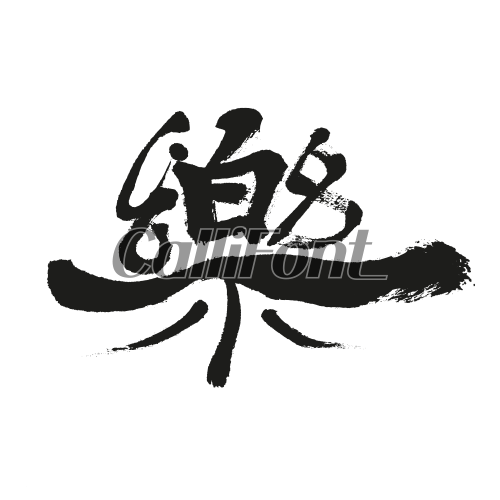락 한자
락 한자는 한자 중에서도 특별한 위치를 차지하고 있는 한자들입니다. 이러한 한자들은 역사와 문화적인 의미를 갖고 있으며, 한자 학습자들에게는 중요한 역할을 수행하고 있습니다. 이번 글에서는 락 한자의 개요, 역사, 사용, 특징, 의미, 미래, 교육과 학습에 대해 다뤄보겠습니다.
락 한자의 개요
락 한자는 일본어 즐거울 락 (楽)과 한자 (漢字)를 합친 용어로서, 한자를 통해 일본어를 학습하고 이해하는 것을 의미합니다. 이러한 한자들은 일본에서 오랫동안 사용되어 왔으며, 일본어 단어를 이해하는 데 큰 도움을 주고 있습니다. 예를 들어, 오락 (娯楽)은 취미나 오락을 의미하며, 한자로 표현된 일본어 단어입니다.
락 한자의 역사
락 한자는 중국에서 기원한 한자를 통해 일본어를 표현하는 고유한 형태입니다. 한자는 중국에서 발전하면서 각 나라에 전해졌고, 일본에서는 이것을 자국어에 도입하여 사용하게 되었습니다. 이러한 과정에서 일본에서만 특별한 의미를 갖고 있는 한자들이 형성되었고, 락 한자도 그 중 하나입니다.
락 한자의 사용
락 한자는 일본에서 주로 문화, 예술, 음악, 오락 등과 관련된 단어에 사용됩니다. 예를 들어, 노래를 나타내는 단어인 “노래”는 일본어에서 “うた”로 표기되며, 한자로는 “歌”가 사용됩니다. 이처럼 락 한자는 일상 생활에서 자주 만나는 단어들에 사용되어 왔습니다.
락 한자의 특징
락 한자는 앞서 언급한 것처럼 일본에서만 특별한 의미를 갖고 있는 한자들로 구성되어 있습니다. 그들은 주로 문화적인 단어나 개념을 표현하는 데 사용되며, 다른 한자들과 비교하여 특별한 표기법이나 의미를 가지고 있습니다.
락 한자의 의미
락 한자는 다양한 의미를 갖고 있으며, 이는 한자의 특성과 일본 문화와 밀접한 관련이 있습니다. 예를 들어, “楽”은 일본어에서 즐거운 뜻을 가지고 있으며, “娯楽”은 취미나 오락을 의미합니다. 이와 같이 락 한자는 그 자체로도 의미를 갖고 있으며, 일본어와 관련된 개념을 한자로 나타내기에 적합합니다.
락 한자의 미래
락 한자는 현재와 미래에도 중요한 역할을 수행할 것으로 기대됩니다. 한자 학습은 일본어 학습의 기초이며, 일본어 문화를 이해하는 데 큰 도움을 줍니다. 따라서 락 한자와 같은 중요한 한자들은 앞으로도 계속해서 사용되고 발전할 것으로 예상됩니다.
락 한자의 교육과 학습
락 한자를 학습하는 것은 한자 학습자들에게 매우 중요한 과정입니다. 락 한자는 한자를 통해 일본어를 이해하기 때문에, 일본어 학습자들은 락 한자의 사용법과 의미를 잘 이해해야 합니다. 이를 위해 한자사전이나 전문 교재 등을 활용하여 적절한 학습 방법을 찾는 것이 필요합니다.
FAQs (자주 묻는 질문들)
Q: 락 한자를 배우는 것이 중요한 이유는 무엇인가요?
A: 락 한자는 한자를 통해 일본어를 학습하는 데 중요한 역할을 수행합니다. 일본어 단어의 의미를 한자로 이해하는 것은 일본어 문화를 이해하는 데 큰 도움이 됩니다.
Q: 락 한자를 어떻게 배울 수 있나요?
A: 락 한자를 배우기 위해서는 한자사전이나 전문 교재를 활용하는 것이 좋습니다. 또한, 일본어 관련 영상이나 문서를 통해 락 한자를 자주 접하는 것도 도움이 될 것입니다.
Q: 락 한자를 잘 활용할 수 있는 방법은 무엇인가요?
A: 락 한자를 잘 활용하기 위해서는 일본어 문맥에서 해당 단어가 어떤 의미로 사용되는지 이해하는 것이 중요합니다. 이를 위해 일본어 문화와 관련된 다양한 자료를 참고하고 학습하는 것이 좋습니다.
Q: 락 한자와 일본어 단어의 관계는 어떻게 되나요?
A: 락 한자는 일본어 단어의 의미와 관련이 있으며, 한자를 통해 일본어 단어를 이해하는 데 도움을 줍니다. 일본어 단어를 한자로 표기하는 것은 일본 문화와 관련된 개념을 좀 더 깊게 이해할 수 있는 방법입니다.
종합하면, 락 한자는 중요한 역사와 특징을 가진 중요한 한자들로써, 한자를 통해 일본어를 학습하는 데 도움을 주고 있습니다. 락 한자의 사용과 의미를 잘 이해하며, 관련된 자료와 교재를 활용하여 적절하게 학습하는 것이 중요합니다. 락 한자는 미래에도 계속 사용되고 발전할 것으로 기대되며, 한자 학습자들에게 큰 도움을 줄 것입니다.
사용자가 검색한 키워드: 락 한자 樂, 낙 한자, 즐거울 락 일본어, 오락 한자, 한자사전, 즐거울 낙, 악 한자, 머물다 한자
Categories: Top 49 락 한자
#83. 落(떨어질 락) #Shorts
여기에서 자세히 보기: phucminhhung.com
樂
To understand the depth of the concept of 樂, it is crucial to acknowledge its origins in Confucianism and Taoism, two influential philosophical traditions in Korea. Confucianism places great emphasis on moral conduct, cultivating virtue, and harmonious relationships, which are essential components in achieving 樂. This perspective emphasizes that true happiness and contentment can be achieved through the proper cultivation of oneself and fulfilling social responsibilities.
In Taoism, 樂 is seen as a natural flow of life, and the Daoist practices aim to align oneself with the Dao, the universal principle within all beings. This alignment allows individuals to find happiness and fulfillment through living in harmony with nature and following one’s true nature. This perspective champions simplicity, tranquility, and self-sufficiency as pathways to 樂, contrasting the materialistic pursuits often associated with modern society.
Throughout Korean history, the concept of 樂 found its expression in various art forms. Traditional music, such as “gagok” and “jeongga,” often depicted narratives and emotions related to 樂. These melodies, accompanied by the lyrics encapsulating themes of joy, sorrow, and harmony, served as a medium for expressing and experiencing 樂 in a collective setting.
Similarly, traditional dance forms like “cheoyongmu” celebrated the pursuit of happiness and represented the triumph of good over evil. Through movements that expressed exuberance and joy, dancers conveyed the essence of 樂, bringing it alive for both performers and audiences alike.
Furthermore, the concept of 樂 extends beyond artistic and philosophical spheres into everyday life in Korea. It manifests in interpersonal relationships, family values, and the pursuit of personal well-being. Korean society places great importance on the foundations of happiness, which include maintaining strong family ties, valuing filial piety, and participating in communal activities.
In Korean families, the well-being and happiness of each member is considered vital for the overall family 樂. The emphasis on communal harmony often translates into collective decision-making, shared responsibilities, and an unwavering support system. Celebrations and festivals, such as Seollal (Lunar New Year) and Chuseok (Harvest Festival), are occasions that bring families together, reinforcing the notion of 樂 through shared experiences of food, traditional rituals, and expressions of gratitude.
The pursuit of personal well-being and self-cultivation is another essential aspect tied to the concept of 樂 in Korean culture. The emphasis on education, personal growth, and professional success all contribute to individual happiness and overall societal 樂. Koreans often seek happiness by obtaining secure employment, achieving academic excellence, and pursuing personal interests and hobbies.
In recent years, there has been a growing interest in mindfulness, meditation, and other practices that promote mental and emotional well-being. These practices align with the traditional values of seeking 樂 through self-improvement and finding balance amidst a modern and fast-paced lifestyle.
FAQs:
Q: What is the difference between 樂 and 행복 (haengbok)?
A: While both terms can be loosely translated as “happiness” in English, there are subtle distinctions between them. 樂 encompasses a broader range of positive emotions and is intrinsically tied to the pursuit of harmony, fulfillment, and contentment. 행복, on the other hand, is often used to denote a more immediate or transient sense of happiness or joy.
Q: How can one cultivate 樂 in their daily life?
A: Cultivating 樂 requires individuals to embrace both external and internal factors. Prioritizing meaningful relationships, finding balance in work and personal life, pursuing passions, practicing gratitude, and engaging in mindfulness are some ways to develop a sense of 樂 in day-to-day life.
Q: Is 樂 unique to Korean culture?
A: While the specific term 樂 may not exist in other cultures, the underlying ideas it represents are universal. Various cultures have their own concepts and practices related to finding happiness, fulfillment, and living harmoniously. However, the expression and importance placed on 樂 in Korean culture are unique to the country’s history, values, and societal norms.
In conclusion, the concept of 樂 in Korean culture is deeply ingrained and multifaceted, encompassing both philosophical and practical aspects. It portrays the pursuit of happiness, fulfillment, and overall well-being through personal cultivation, harmonious relationships, and embracing cultural traditions. Understanding and experiencing 樂 in its many forms offers valuable insights into the Korean way of life, emphasizing the significance of balance, harmony, and collective happiness for a fulfilling existence.
낙 한자
Meanings of 낙(落):
The hanja character 낙 has multiple meanings, each carrying its own nuances. Some of the key meanings are as follows:
1. To fall or descend:
One of the fundamental meanings of 낙 is ‘to fall’ or ‘to descend.’ This could refer to both physical and metaphorical falling. For instance, 낙산(落山) is the act of descending a mountain. Additionally, 낙제(落址) represents the idea of a site’s location being determined by the process of descending or falling onto it.
2. Enjoyment or pleasure:
In a more figurative sense, 낙 connotes the idea of enjoyment or pleasure. This is evident in words such as 낙원(落園), which refers to a paradise or utopia where one can experience pure enjoyment and bliss. Furthermore, 낙태(落胎) describes a miscarriage, indicating the loss of an unborn child and the associated sorrow that follows.
3. Failure or disappointment:
On the other hand, 낙 can also signify failure or disappointment. For example, 낙담(落檀) is a term used to describe feeling down or discouraged. Similarly, 낙제(落帝) represents the abdication of an emperor, symbolizing the failure of one’s reign.
Usage in the Korean language:
The hanja character 낙 is frequently used in Korean vocabulary, often immersing words with vivid meanings and cultural significance. Here are some common words that incorporate this character:
1. 낙서(落書): Refers to doodling or scribbling, indicating a casual and unstructured form of writing or drawing.
2. 낙엽(落葉): Represents fallen leaves, often associated with the beauty of autumn.
3. 자낙(字落): The act of characters or letters falling apart or deteriorating due to age or damage.
4. 낙화(落花): Symbolizes the act of flowers falling off, usually indicating the end of a blooming period.
5. 낙하산(落下山): Describes the process of skydiving, as one ‘falls’ from the sky or an elevated point.
Cultural Significance:
낙 holds substantial cultural significance in Korean history and literature. It appears in numerous poems, proverbs, and traditional idioms, enriching the language with its symbolic value. For instance, a famous Korean proverb, “높은 나무는 바람을 많이 받고 낙엽의 굵은 것이 많다” translates to “Tall trees receive more wind and have thicker fallen leaves.” This proverb implies that people in positions of power or authority face more hardships and responsibilities. The association of 낙엽 with difficulties conveys the symbolism of 낙 as both beautiful and burdensome.
FAQs:
Q1. How many hanja characters are there in the Korean language?
The Korean language has an extensive pool of hanja characters, numbering over 2,000. However, the usage of hanja has decreased over time, and most Koreans nowadays primarily use hangul, the native Korean alphabet.
Q2. Are hanja characters still relevant in modern Korean society?
Although the usage of hanja characters has diminished in daily life, they still play a vital role in formal contexts such as legal documents, academic research, and literature. Additionally, hanja knowledge is highly valued among those studying the Korean language or pursuing careers in law, medicine, and humanities.
Q3. How can I learn hanja characters?
There are various resources available for learning hanja characters. Many textbooks and online courses offer lessons specifically dedicated to hanja. Additionally, Korean dictionaries often provide hanja translations and explanations of words, enabling learners to grasp the character’s meanings and usage.
Q4. Which hanja characters are the most important to learn?
While the importance of hanja characters may vary depending on personal interest or specific fields of study, some characters recur more frequently in Korean vocabulary. Learning hanja characters related to basic numbers, family members, and daily life objects can be a good starting point for beginners.
In conclusion, the hanja character 낙 holds diverse meanings and plays a significant role in the Korean language. Through its various meanings, it enriches vocabulary, proverbs, and cultural symbolism. While the prevalence of hanja has decreased over time, its knowledge remains valuable for those studying the Korean language and exploring the depths of Korean culture.
주제와 관련된 이미지 락 한자

락 한자 주제와 관련된 이미지 22개를 찾았습니다.




![일본어 한자암기박사2 상용한자 심화학습 - 제목번호 061[若諾匿 약(야)락(낙)닉] - YouTube 일본어 한자암기박사2 상용한자 심화학습 - 제목번호 061[若諾匿 약(야)락(낙)닉] - Youtube](https://i.ytimg.com/vi/5n6YVsJZ67c/hq720.jpg?sqp=-oaymwE7CK4FEIIDSFryq4qpAy0IARUAAAAAGAElAADIQj0AgKJD8AEB-AH-DoACuAiKAgwIABABGGUgZShlMA8=&rs=AOn4CLBPg1GsPms3udlg2YfXya4zgX6wDQ)





![캘리그라피 ] 즐거울 락 : 네이버 블로그 캘리그라피 ] 즐거울 락 : 네이버 블로그](https://mblogthumb-phinf.pstatic.net/MjAyMTA5MzBfMTA3/MDAxNjMyOTc1NDc2NjY2.565W5wXkpPceM2Tu10ij3mwIYVr-wXMSU-2lr3i6q8cg.xydLewd7dSQ8CkqdPkAbJGOg48wmdckYIoRtM_PAQLkg.JPEG.hoho24469/PicsArt%EF%BC%BF09%EF%BC%8D30%EF%BC%8D01.06.19.jpg?type=w800)




![어휘력이 자라는 즐거운 생활한자] 화엽락(花葉落) 한자 이야기]<374>落其實者思其樹, 飮其流者懷其源|동아일보” style=”width:100%” title=”한자 이야기]<374>落其實者思其樹, 飮其流者懷其源|동아일보”><figcaption>한자 이야기]<374>落其實者思其樹, 飮其流者懷其源|동아일보</figcaption></figure>
<figure><img decoding=](https://dimg.donga.com/wps/NEWS/IMAGE/2008/03/13/7051621.1.jpg)





![絡 이을락 얽을락 준3급한자 붓글씨 calligaphy - YouTube 한자 이야기]<333>三年視敬業樂群, 五年視博習親師|동아일보” style=”width:100%” title=”한자 이야기]<333>三年視敬業樂群, 五年視博習親師|동아일보”><figcaption>한자 이야기]<333>三年視敬業樂群, 五年視博習親師|동아일보</figcaption></figure>
<figure><img decoding=](https://dimg.donga.com/wps/NEWS/IMAGE/2008/01/11/7042530.1.jpg)
Article link: 락 한자.
주제에 대해 자세히 알아보기 락 한자.